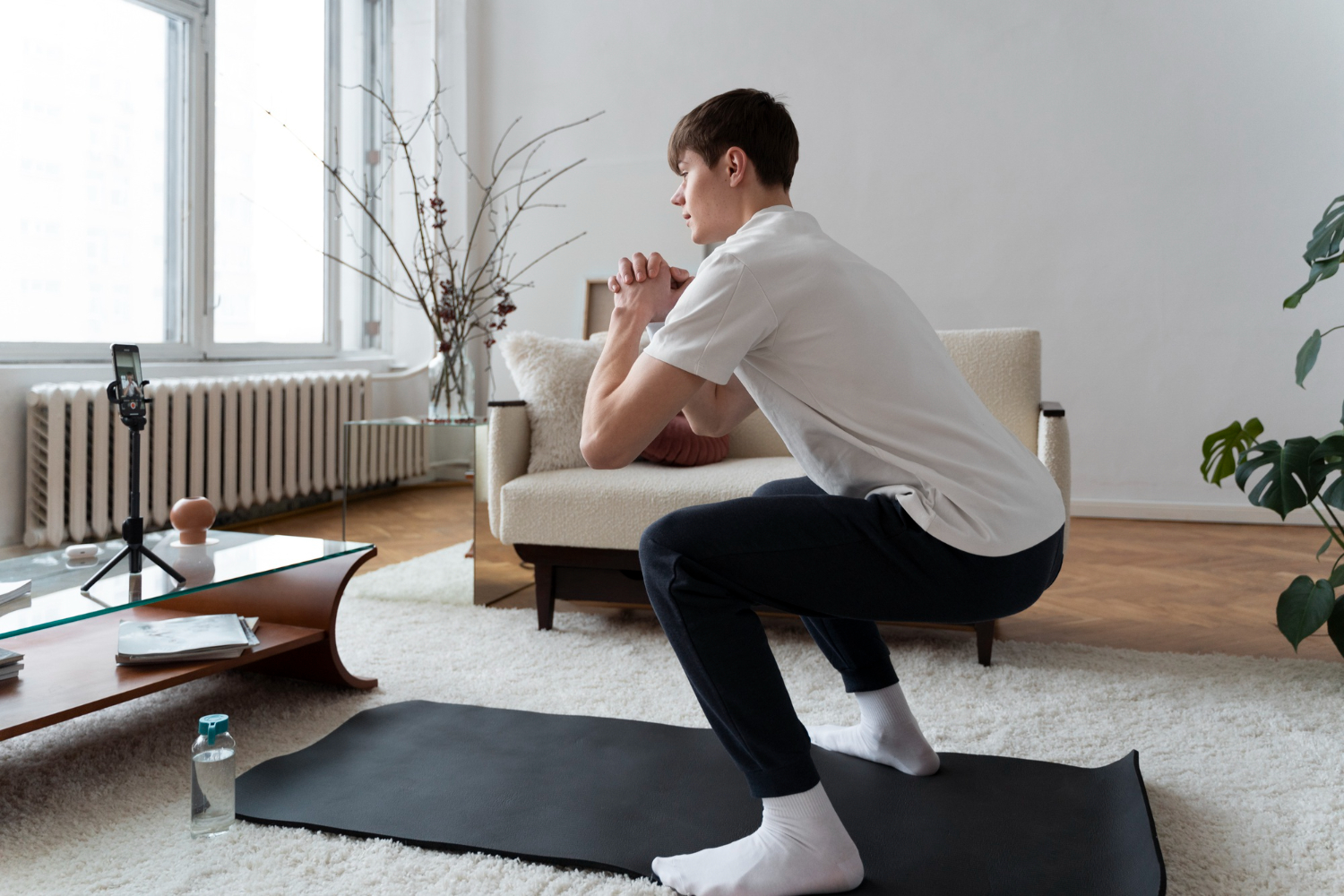When it comes to squats, sumo squats and goblet squats may seem like close relatives. But they're designed to target different muscles and fitness goals. Whether you're looking to strengthen your hips, stabilize your core, or achieve perfect squat form, knowing the differences can help you level up your lower body game. Not sure which to choose: sumo squats or goblet squats?
ContentWhat is a sumo squat?What is a goblet squat?Sumo squats or goblet squats: The differencesSumo squats or goblet squats: Which should you choose?
WomanEL will review the advantages and disadvantages of these exercises, as well as give advice on how to choose the most suitable option for your workout.
What is a sumo squat?
Sumo squats are wide-stance squats that primarily target the buttocks, especially the gluteus maximus (the largest buttock muscle), but also work the gluteus minimus, hamstrings, calves, adductors (inner thighs), core, and pelvic floor, says trainer Michelle Wilborn.
How to do sumo squats:
- Stand with your feet slightly wider than hip-width apart, toes pointed out at a 45-degree angle.
- Clap your hands together at your chest or grab a dumbbell or kettlebell with both hands so it hangs between your legs.
- Keeping your back straight, push your hips back and bend your knees over your toes to squat.
- Lower until your thighs are parallel to the floor (or as low as possible).
- Squeeze your glutes, push off your heels, and return to a standing position.
The sumo squat is a powerful movement for developing lower body strength and stability. Here are the benefits it provides:
- Strength and stability of the hips.
- Explosive strength.
- Pelvic floor strength .
Despite their high efficiency, sumo squats are not suitable for everyone – especially if you have problems with the hip joints, knees or back. Disadvantages:
- Tight hips? Sumo squats can be challenging.
- Limited hip mobility can cause your knees to shift during the exercise, which can lead to discomfort or tension in the medial knee.
- Lower back strain. Holding weight between your legs can also strain your lower back muscles (especially if you don't engage your core properly), which can increase your risk of lower back pain.
What is a goblet squat?
Goblet squats are a variation of traditional squats (usually done with dumbbells or kettlebells held close to your chest) that primarily targets the front of your body—your quads and core—while also engaging your entire body.
How to do a dumbbell squat:
- Stand with your feet shoulder-width apart, toes pointed slightly outward.
- Hold a kettlebell in front of your chest (if you're using a dumbbell, keep it vertical).
- Elbows should be tucked into your sides, not spread.
- Keeping your chest up and core engaged, push your hips back and bend your knees to lower into a squat.
- Continue to lower until your thighs are parallel to the ground. Or as close as you can without pain and while maintaining proper form.
- Squeeze your glutes, push through your heels, and return to a standing position.
Goblet squats aren’t just a leg-day favorite, they’re a total-body strength booster with serious benefits:
- Cortical strength.
- Improved posture.
- Improved overall mobility.
- Improved grip strength.
For all their effectiveness, dumbbell squats have a number of limitations:
- Mobility issues. They require reliable ankle dorsiflexion and spinal stability. If you struggle in any of these areas, maintaining proper form can be difficult.
- Upper body fatigue. Holding the weight close to your chest can cause fatigue in your arms, shoulders, and wrists, which can limit the amount of weight you can lift if your upper body strength or grip weakens.
Sumo Squats vs. Goblet Squats: The Differences
According to Wilborn, it all comes down to stance and weight distribution. Sumo squats use a wide stance that targets the adductors, external hip rotators, and hamstrings. Goblet squats, in which the weight is held close to the chest, focus on the quads and core.
Sumo squat or goblet squat: what to choose?
 It is impossible to determine which is better: sumo and goblet squats. Everyone decides this for themselves, Source: freepik.com
It is impossible to determine which is better: sumo and goblet squats. Everyone decides this for themselves, Source: freepik.com
It all depends on your goals, your level of fitness, and whether you have had any previous injuries. Here's how to determine which squat variation is best for you, according to Wilborn.
Choose sumo squats if:
- You're working on hip stability or lateral movement, especially for sports that require rapid changes in direction.
- You want an exercise that's safe for your knees, as the wide stance reduces stress on your joints.
Choose goblet squats if:
- You're new to squatting or want to improve your squat form—this move replicates the mechanics of a traditional squat.
- You have lower back pain, as the weight held forward helps to align your spine properly and engage your core.
Both exercises require proper mobility—especially in your hips, spine, and ankles—and a strong core to support your core, Wilborn says. form and avoid injury. If you're new to these moves, start with light weights and progress gradually to safely build strength.
Want to get your arms strong too? We suggest doing this powerful exercise (with or without dumbbells).

